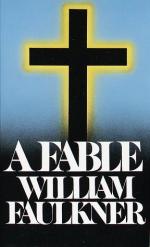|
This section contains 4,030 words (approx. 14 pages at 300 words per page) |

|
My sense of the relationship between Faulkner, Freud, and Nietzsche is that they were writers who addressed themselves to many of the same questions, and that at numerous point their works form imaginative analogues to one another. (pp. 2-3)
It is precisely because I understand Faulkner, Freud, and Nietzsche to be related specifically as writers that I treat the works of all three as literary texts whose implications are ultimately philosophical. (p. 3)
The figure of Quentin Compson—the narrator locked in an incestuous, suicidal struggle with his dark twin, the story—is the shadow that falls in one form or another across the works of most postwar American novelists; it is a presence, a pervasive influence that the novelist who aspires to major status must come to terms with. (p. 20)
Of the many levels of meaning in [Absalom, Absalom!], the deepest level is to be found in the...
|
This section contains 4,030 words (approx. 14 pages at 300 words per page) |

|


